Types of Japanese Swords Used by Samurai Warriors
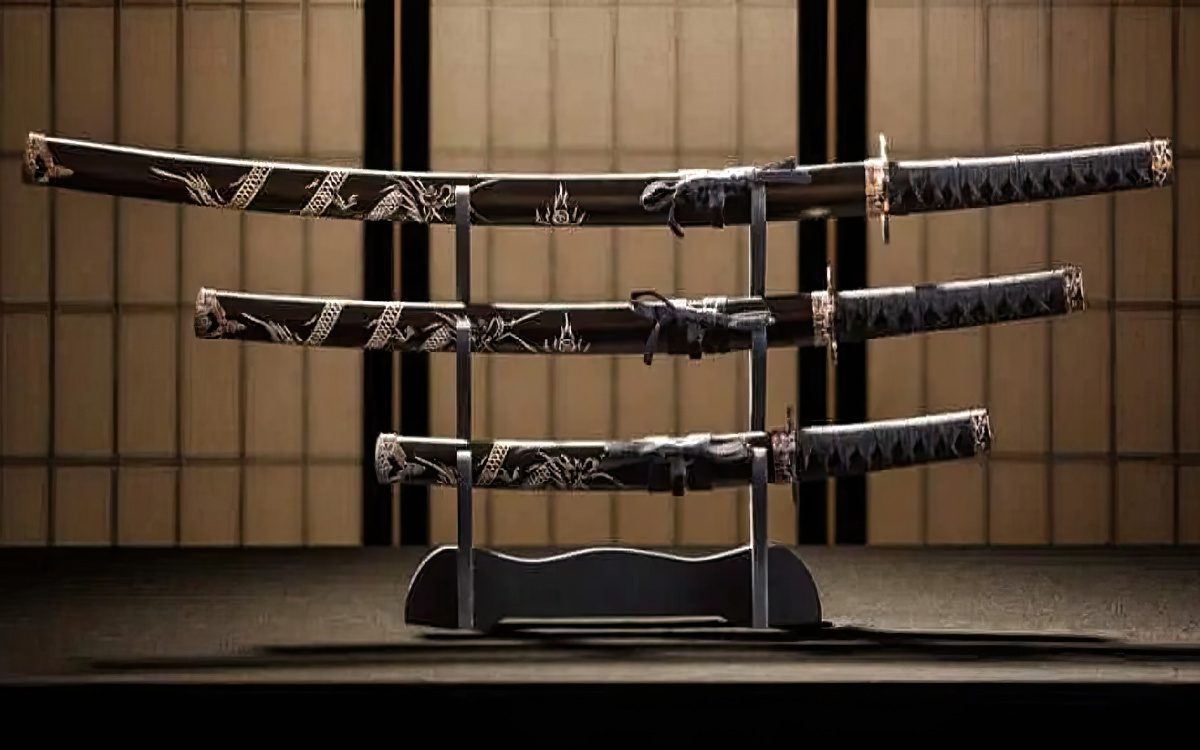
What’s in this article?
The samurai warriors of feudal Japan were highly skilled in swordsmanship and utilized various types of swords in different combat situations. Apart from being an efficient slashing weapon, the samurai sword also became a powerful symbol of the warrior’s social status and wealth. The craftsmanship of these swords further elevated their value, transforming them into works of art.
Let’s explore the different types of swords the samurai warriors used, their unique design elements, and their historical use in combat.
Who Were the Samurai?
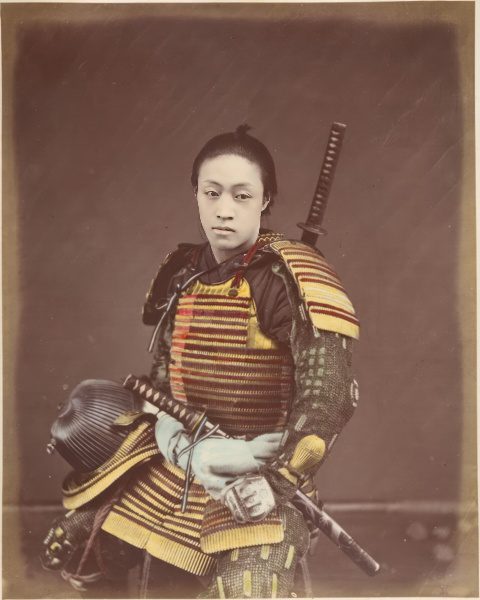
Originally, the term samurai referred specifically to Japan’s aristocratic warriors known as bushi. Over time, it came to apply to all members of the warrior class who rose to power in the 12th century when the country’s first military dictatorship, the Kamakura Shogunate, was established. The samurai warriors dominated the Japanese government and society until the Meiji Restoration in 1868.
The samurai warriors were servants of the daimyos—local warlords who had territorial control over various lands in the country. They fought for the daimyo when wars took place and protected his lands. The samurai also backed up the authority of the shogun (military ruler of the shogunate), giving him power over the emperor.
The samurai were highly trained in swordsmanship, archery, and horseback riding. In samurai culture, the sword served not only as a weapon but also as a status symbol. The samurai sword was highly regarded and often referred to as the soul of the warrior. It was contrary to the ninjas, the spies and assassins of feudal Japan, who regarded their ninjato as a mere weapon or tool.
Swords and Daggers Used by Samurai Warriors
Changes in military strategy created the need for different types of swords suited to the demands of samurai warfare. These swords differed in blade length, curvature, design, and intended purpose.
1. Tachi
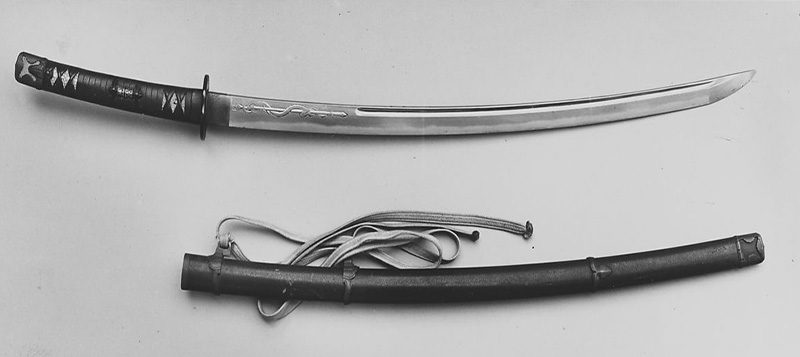
The tachi was the first curved sword of Japanese design. It had a long, deeply curved, single-edged blade designed for slashing. A mounted warrior from horseback used it for slashing down from above with great speed. It was worn edge-down and tied to the outside of armor, requiring two motions of drawing the sword and delivering a blow.
The tachi sword was produced primarily during the Koto era, from the 10th century to the 1600s. These long swords predated the uchigatana or katana swords. Later on, the mounting hardware of the tachi became too bulky, making it impractical and uncomfortable for everyday use, especially when not wearing armor or engaged in regular tasks.
- Founding Year: In the mid-Heian Period (794 – 1185)
- Blade Length: A long sword with a blade longer than 24in (60cm) or 2 shaku
- Use: Designed for slashing, usually from horseback
- Characteristic Feature: Worn slung from the belt, with the edge facing down
2. Koshigatana

Koshigatana literally means hip sword or waist knife, as it was carried at the waist. It was the predecessor of the tanto dagger. It served as a close-combat and all-purpose weapon of the high-ranking samurai and accompanied the tachi, a so-called sashizoe. When fighting mounted and in armor, the samurai usually wore the koshigatana thrust on the belt, a tachi suspended from the waist, and a bow in one hand.
The koshigatana was known to be in use from at least the end of the Heian period, but was most popular during the Kamakura and Nanbokucho periods. It usually lacked a hand guard (tsuba) in a mounting called aikuchi, and its hilt (tsuka) was unwrapped, either of plain wood, lacquered, or covered with rayskin. Also, the end of its hilt swelled toward the top, and the menuki was directly pinned on the hilt.
- Founding Year: In the Heian Period (794 – 1185)
- Blade Length: A dagger with a blade length from about 7 to 11in (18 to 30 cm)
- Use: Close-combat and all-purpose weapon
- Characteristic Feature: Worn with a tachi, thrust on the belt
3. Kodachi

Kodachi literally means small tachi. It had the normal tachi shape and was mounted in tachi style, worn with its cutting edge down from the belt, yet had a shorter length. However, its purpose remains unknown. It likely functioned as a companion sword of the normal-sized tachi or was designed for use by young samurai.
The kodachi probably emerged when the noblemen wanted longer blades than the koshigatana to wear in coaches (kuruma), in a carriage, or by their bedside for self-defense. Hence, it was also called kuruma-dachi and kuruma-gatana.
- Founding Year: In the Kamakura Period (1192 – 1333)
- Blade Length: A short sword with a blade about or shorter than 23in (60.6cm) or 2 shaku
- Use: For self-defense and companion sword of tachi
- Characteristic Feature: A short sword worn with its cutting edge down.
4. Odachi / Nodachi

The term odachi refers to an oversized tachi, also called nodachi, meaning field sword. Their blade lengths are much longer than the swords worn at the samurai’s belt. Some were even longer than the naginata polearm when the measurements included their handles. Therefore, the samurai carried them across the back, by hand, or had a weapon-bearer to help draw them.
The samurai mostly used the odachi during the Nanbokucho period, from 1336 to 1392, as these extremely long swords were unsuitable for close-quarters combat. The foot soldiers and cavalrymen used them on the battlefield. Some enormously long examples still exist in temples and shrines, but those only served as offerings—not battlefield weapons.
- Founding Year: In the Nanbokucho Period (1336 – 1392)
- Blade Length: An oversized tachi with a blade longer than 35in (90 cm) or 3 shaku, with some longer than 47in (120cm)
- Use: An extremely-long fighting sword and a ceremonial object
- Characteristic Feature: An enormously long blade
5. Nagamaki

Not to be confused with the naginata polearm, the nagamaki refers to the Japanese sword with an extra-long tang and handle, with the handle often as long as the blade. The term nagamaki translates as long (hilt) wrapping. The foot soldiers used it to bring down horses, and the weapon was designed for large slicing and sweeping strokes.
Some experts believe that the nagamaki evolved from the odachi of the Nanbokucho Period and peaked in the following Muromachi period. The lower part of the odachi blade, which was often blunt, was wrapped to extend the handle. Samurai warriors used it as a sword, in which hands were kept in a fixed position, unlike polearms that required the constant change of hand positions.
- Founding Year: In the Muromachi Period (1338 – 1573)
- Blade Length: About 35in (90 cm) or 3 shaku
- Use: For fighting and bringing down horses
- Characteristic Feature: Extra-long handle, often as long as the blade itself
6. Uchigatana
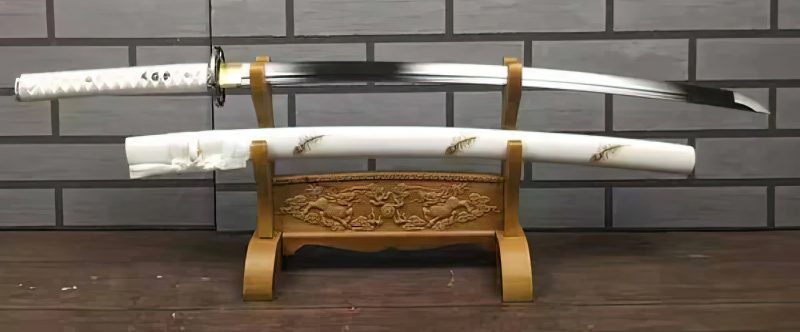
The uchigatana refers to a sword worn through the belt, with the cutting edge facing up. Wearing the sword edge-up allowed drawing and slashing actions in one stroke, contrary to the two motions needed when the tachi was worn edge-down. It was typically mounted with a hand guard (tsuba) though there were also ones without tsuba when mounted in aikuchi style.
By the middle of the 15th century, the samurai class began to use the uchigatana, instead of the koshigatana, to supplement their tachi. Later on, the uchigatana became so widespread that it replaced the tachi. Two uchigatana swords were used, with the long blades called katana and the short blades called wakizashi.
- Founding Year: In the Muromachi Period (1338 – 1573)
- Blade Length: Forged in both short and long lengths
- Use: Primary and secondary weapons
- Characteristic Feature: Worn on the waist, with the cutting edge up.
7. Katana
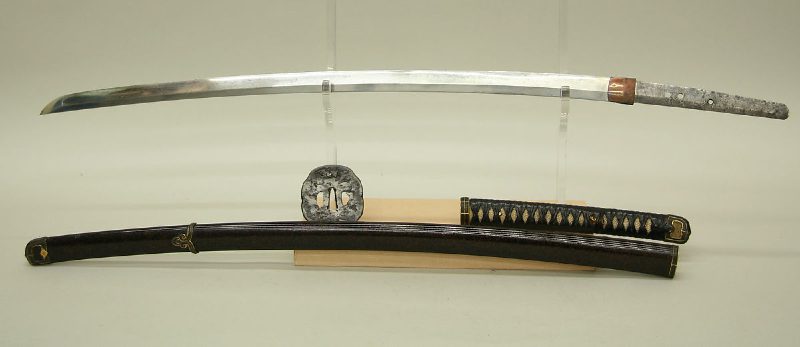
The most popular sword in Japanese history, the katana, was the longsword of the samurai. Like the tachi, the katana was a single-edged sword with a curved blade, yet it had a shallower curvature than the former. It was worn thrust through the obi belt, with its edge facing upward, allowing it to be drawn and immediately used for slashing.
During the Shinto (New Swords) and Shinshinto (New-New Swords) eras, the katana sword completely replaced the tachi. It served both as a lethal weapon and a badge of rank of the samurai, as persons outside of the samurai class were not permitted to wear the long sword. Today, the katana blades remain valued for their artistic features, including the visible hamon pattern on the cutting edge.
- Founding Year: In the late Muromachi Period (1338 – 1573)
- Blade Length: A long sword with a blade of more than 24in (60cm) or 2 shaku
- Use: Designed for slashing, mainly when fighting on foot
- Characteristic Feature: Worn tucked into the belt, edge up
8. Wakizashi
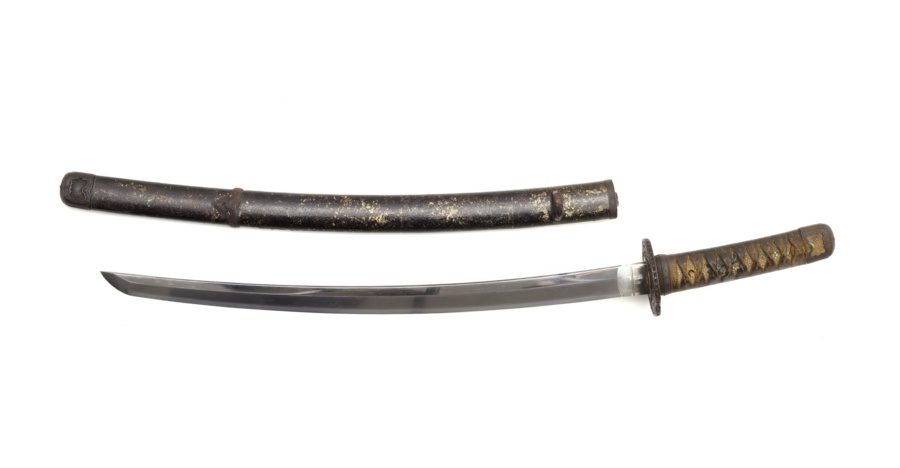
The wakizashi was the short sword and backup weapon of the samurai. It was worn on the obi belt with the cutting edge facing up. Particularly suited in close-quarters combat and against longer weapons like spears, the samurai wore it when wearing armor and formal Japanese clothing.
Special terms are used for wakizashi blades: ko-wakizashi (short wakizashi) and o-wakizashi (long wakizashi). In the Edo period, the shorter wakizashi was also a self-defense weapon of other social groups, including townspeople and merchants.
- Founding Year: In the late Muromachi Period (1338 – 1573)
- Blade Length: A short sword with a blade longer than 12in (30cm) or 1 shaku and less than 24in (60cm) or 2 shaku
- Use: Self-defense weapon and a secondary sword
- Characteristic Feature: Worn thrust through the belt, edge up
9. Daisho
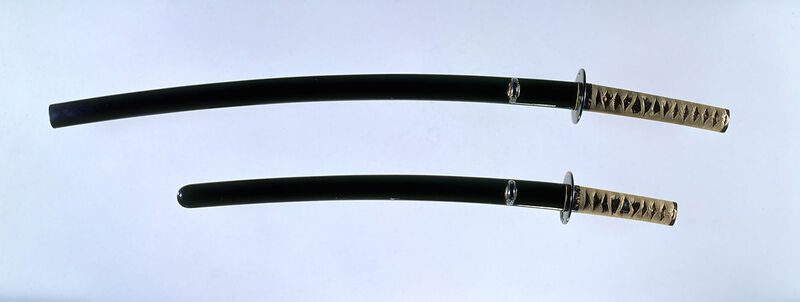
The daisho was a matching pair of long and short swords worn exclusively by the samurai class. The katana was the long sword, while the wakizashi was the shorter companion sword in a daisho pair. When indoors, a samurai traditionally left the katana by the door, so the wakizashi served as a backup weapon.
The daisho appeared towards the end of the Muromachi period and remained popular until the Edo period. Ideally, both swords had matching scabbards (saya) and fittings and were made by the same swordsmith. The samurai showed off their personal taste and wealth through luxurious sword mountings. The samurai also wore a formal daisho koshirae for ceremonial use.
- Founding Year: In the late Muromachi Period (1338 – 1573)
- Blade Length: A pair of short and long swords
- Use: Part of samurai attire and badge of rank
- Characteristic Feature: A pair of identically mounted swords worn together
10. Tanto
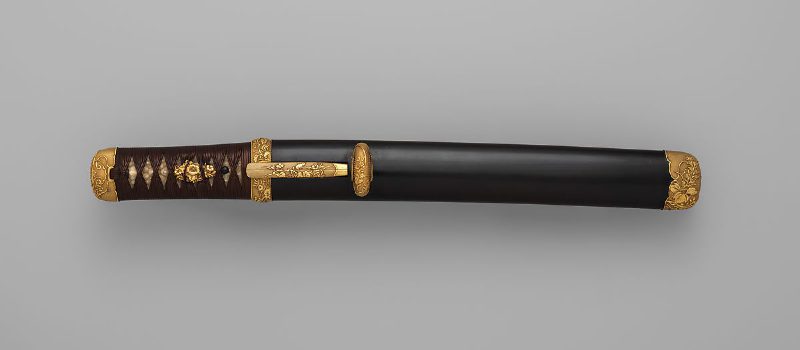
Tanto is a generic term for a Japanese dagger. It came in various shapes and sizes but generally had a single-edged blade of less than 30 centimeters. However, some had a double-edged blade. It was the weapon of last resort before a samurai warrior was left with only his bare hands. The samurai traditionally wore the dagger on their belts when wearing armor.
The tanto was used in seppuku or ritual suicide to avoid capture after battlefield defeats. It first emerged as a practical weapon but eventually evolved into a decorative blade with the same craftsmanship as Japanese swords. It varied in mountings, with the hamidashi including a small hand guard (tsuba), while the aikuchi had no hand guard.
- Founding Year: In the Heian Period (794 – 1185)
- Blade Length: A dagger with a blade shorter than 11in (30.3 cm) or 1 shaku
- Use: Used in seppuku or ceremonial self-disembowelment
- Characteristic Feature: A short, dagger-sized blade




